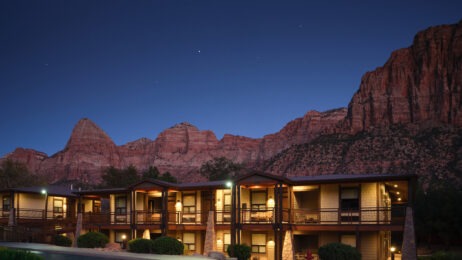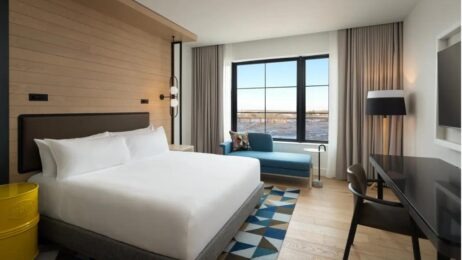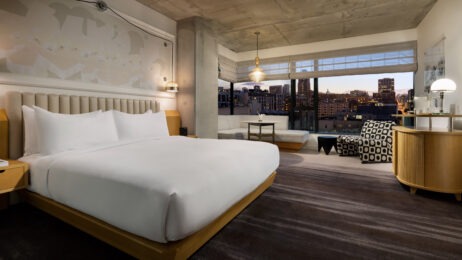Unique team-building experiences using sight, sound, smell, taste and touch
A team pulling together can move mountains. But how to achieve such harmony in action is an age-old management quandary.
A recent Gallup study found that close work friendships boost employee satisfaction—and, presumably, teamwork—by 50 percent, while people with a self-described best friend at work are seven times more likely to be fully engaged. But often, meetings bring together people who barely know each other, even if they are assigned to the same project or work in the same company division. That’s why team building has become a standard part of a planner’s repertoire.
Yet when choosing a team-building activity, have you ever considered the environment in which team members work? How they feel, what they see, what they hear, what they smell and taste are all things that contribute to the happiness and productivity in any team atmosphere. Studies have shown that groups are most effective and engaged when they use their senses. That first sip of coffee in the morning, for instance, brings forth energy and pulsating ideas that are spoken out into an open office, accompanied by the invigorating aromas of freshly brewed coffee beans.
By using the five main senses in a team-building environment, planners can help businesses cultivate a type of company culture that will excite and motivate their teams. Here are creative activities that offer unique team-building experiences using sight, sound, smell, taste and touch.
Connecting to Sight
Our surroundings affect how we feel. In the workplace, an office with natural light, as compared to one that is dimly lit with no windows, can alter an employee’s mood and thought process. In a recent article in Psychology Today, researchers at Northwestern University in suburban Chicago found that there is “a strong relationship between workplace daylight exposure and office workers’ sleep, activity and quality of life.”
Focusing on natural light can help improve mood and productivity, while bold and bright colors can help stimulate creativity and energy levels. The color blue, for instance, is associated with calm, promoting mental clarity, control and creative thinking. Through our sense of sight, we can connect with team members, gaining clarity through communication.
TeamBonding, a company that plans events for 10 to 1,000 people, offers team-building activities such as Infinite Loop, a virtual-reality technology that turns meetings into an opportunity for experiential learning. Infinite Loop is a simulation and role-playing video game that utilizes virtual reality. Teams are supplied with a single VR headset that one team member at a time can use to “visit” the virtual world.
There, they are tasked to describe their surroundings for other team members so that they can work collectively to solve the real-world puzzles, unlock a series of doors and release the trapped player from a virtual prison. The game’s objective is to create competition between teams, and the more precisely the player in the virtual world describes the challenges, the faster teammates can help find the solution. This event is perfect for groups looking to improve real-time communication and collaborate using problem-solving skills.
Great Freedom Adventures provides engaging corporate events that range from half- and full-day outings to multiday tours, each offering team-building opportunities. These events combine beautiful landscapes and seascapes with physical activity to build stronger teams. The Salt Marsh Bike and Hike Tour of the Maine North Shore covers about 17 mostly flat miles while exploring glacial drumlins, wildlife-filled marshlands, a working heritage farm and a historic town with numerous colonial-era homes. Groups cycle and stop at a National Historic Landmark to view a hilltop mansion with beautifully landscaped gardens and grounds.
This time and space outdoors and away from the demands of the office allows team members to relax and lets creative ideas flourish. Companies may customize the tour location and itinerary based upon team goals and interests. Set itineraries are easily accessible from Boston; Providence, Rhode Island; and surrounding areas.
Art Smart offers lively, interactive team building in museum environments that can be customized to meet your team’s specific goals. From scavenger hunts to the Human Nature Game, they use art to improve communication, foster leadership, develop cooperation, encourage collaboration, strengthen values and embrace diversity. Each experience is led by an expert art historian and team-building games are the product of collaboration with world-renowned game designers and art insiders.
Located in New York City, Boston, Chicago and Washington, D.C., Art Smart offers unique programs designed to enhance the ability to experience and see art, as well as to stimulate discussion and inspire creativity within a team.
Connecting to Sound
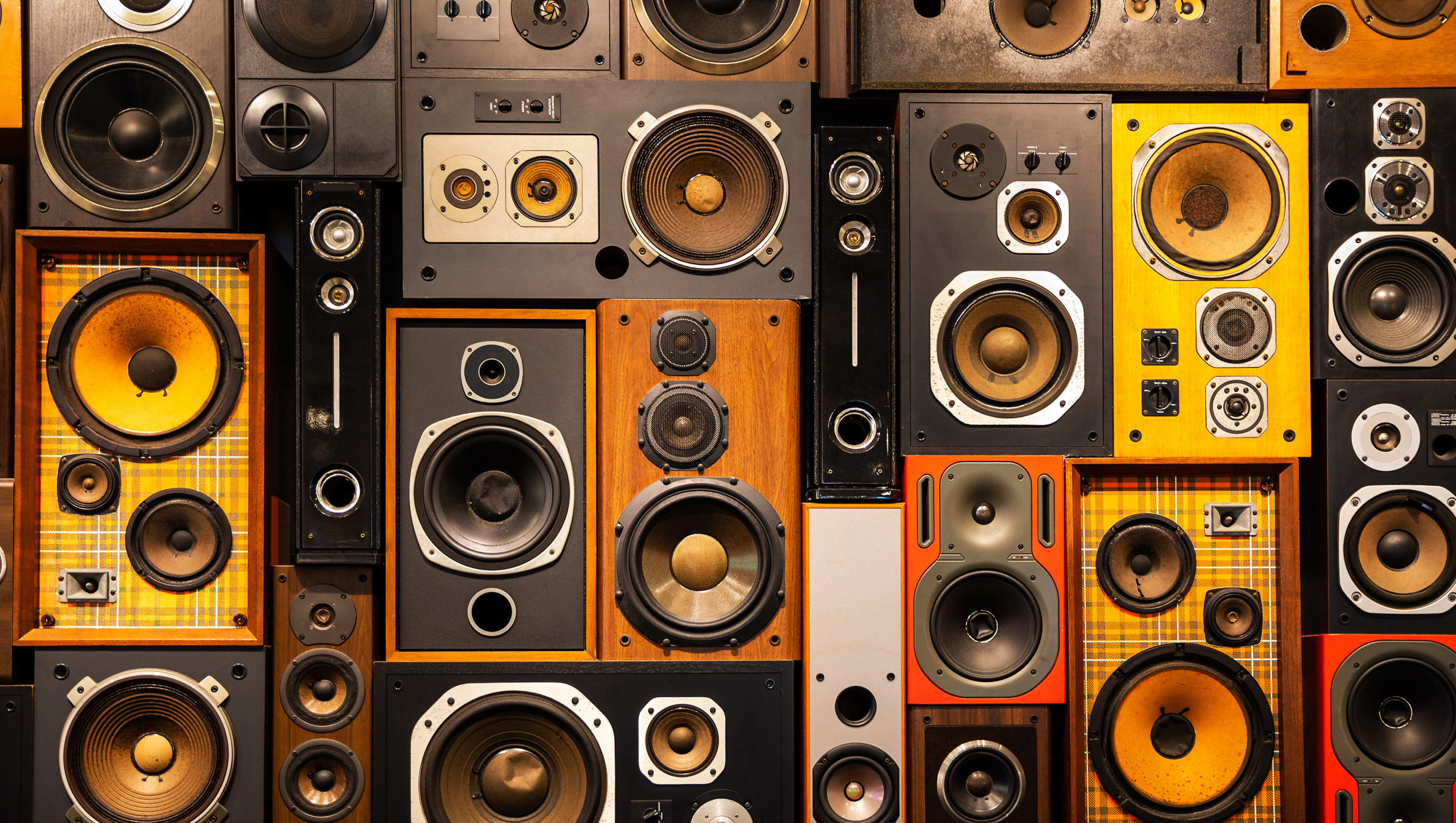
Experiencing a crowded cityscape such as Times Square is completely different from walking the galleries of a nearby art museum. The cacophony of honking taxis and noisy buses can throw the mind into a state of chaos. When that noise is turned down, calm and focus can return.
Noise can create a unique voice within a workplace. Some thrive in the chatter that sweeps through an office, while quiet work environments that are acoustically satisfying can stimulate creativity. Here are team-building activities that use sound to create harmonious connections between employees.
Auster Sound offers sound baths and other sound experiences for small and large groups. Sound baths are an experience in which participants gather, often lying on a mat, to listen to sounds produced by gongs, chimes, Tibetan bowls and other instruments. The Mindfulness & Team Building program is a 30- or 60-minute activity that can include mindfulness and team-building modules plus discussion and meditation practices. A deeper dive can also be designed as a full-day or weekend retreat. This experience is said to develop stronger working relationships and facilitate compassionate communication within groups.
Sound Crowd, a team-building activity created by Catalyst USA, uses sound in a fun and thought-provoking way. Participants use headphones to listen and carry out carefully designed actions as they hear them. As the session evolves, it becomes apparent that not everyone is doing the same action. Participants are guided to discover and join with those who are doing like movements.
This team-building activity, which teaches groups to listen and pay greater attention to details, has been specifically designed with a flexible format that can be tailored to suit groups of 15 or more people.
Another way to use the sense of sound to forge a stronger bond within your team comes from Kona Kai Resort in San Diego. This 170-room resort offers a team sandcastle-building activity. Groups are split into teams and each is given a set of sandcastle essentials plus one bottle of water. Teams are then given the chance to select additional tools and adornments from a stockpile. But here’s the catch: The team member selecting these items is blindfolded, and teammates must shout out directions while a 30-second timer runs. Teams are then challenged to build sand sculptures that embody their company. This team-building activity aims to foster creativity and communication skills within your group.
Connecting to Smell

Tiffany Rose Goodyear, known as The Sentologist, is among those who understand the powerful effect of scent. She helps companies market with scents at trade shows and collaborated on “Denver Lily,” a 30-foot-tall scented work of art at Denver International Airport (DIA) .
Goodyear says scents can reduce stress and have been known to have a marked effect on cognitive functions. In a work environment, scent is an important tool that can spark connections and vivid conversations. By incorporating aromatherapy techniques within team building, groups can create a positive and productive atmosphere.
Catalyst USA has crafted a team-building activity called Essence of Excellence. Your attendees will become alchemists, experimenting with exotic extracts in order to create a blend that defines the mood, likes and characteristics of their target market. Groups of four or more learn the basic techniques of perfumery; they then support their fragrance with a persuasive marketing campaign, which is pitched to the entire group. This activity bridges cultural gaps and builds relationships within teams.

Team TuneUp, a team-building, corporate-training and event-solutions company, offers top-tier experiences across North America. One of its offerings, Dining in the Dark, leads groups blindfolded and led hand-to-shoulder to a completely darkened room. Experiencing a meal in the dark adds a heightened level of smell, flavor and texture to it—and stimulates lots of conversation. Who doesn’t like to talk about food? Team TuneUp works with your venue to prepare the room and design a menu. This fun team building stimulates dialogue that can bring participants closer together.
Connecting to Taste
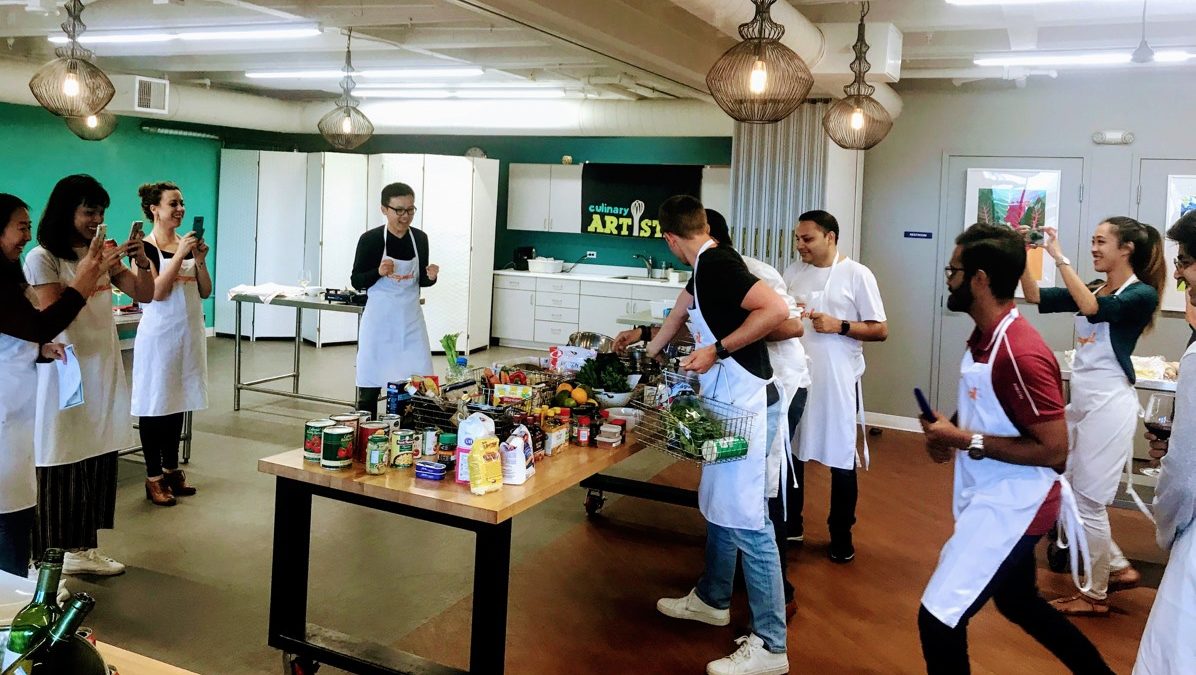
When we taste something, whether good or bad, we have an immediate reaction. This strong emotional response can drive lively conversations—and stimulate team members’ willingness to share and communicate.
Cooking classes, such as those offered by Sidewalk Food Tours of San Francisco, offer team-building cooking competitions for 12 to 30 people led by a professional chef. This 2 1/2-hour event has teams use collaboration and creativity to execute a meal that is tasty and special. A taco challenge, pasta wars and a dumpling challenge are among the options.
Salamander Resort & Spa is a 340-acre luxury property in the heart of Virginia’s wine country that serves up many activities for team building. One that will surely rev up your group’s taste buds is What Was I Drinking. Participants put their palates to the test by tasting and rating local wines. The winner is the team whose average rating is closest to the Wine Spectator ratings of the wines. This 90-minute activity streamlines communication within groups in a fun and relaxed setting.
The Ballantyne, a Luxury Collection Hotel in Charlotte, North Carolina, is a AAA Four Diamond resort offering more than 30,000 sq. ft. of indoor and outdoor event space. Its menu of delicious team-building experiences ranges from a team chocolatier challenge for 15 to 40 people to a plated dessert dash activity for groups of 15 to 50. A salsa and guacamole showdown (10 to 50 people) will slice and dice your group into small teams, each challenged with creating the best-tasting salsa and guac from scratch in the allotted time.
Connecting to Touch
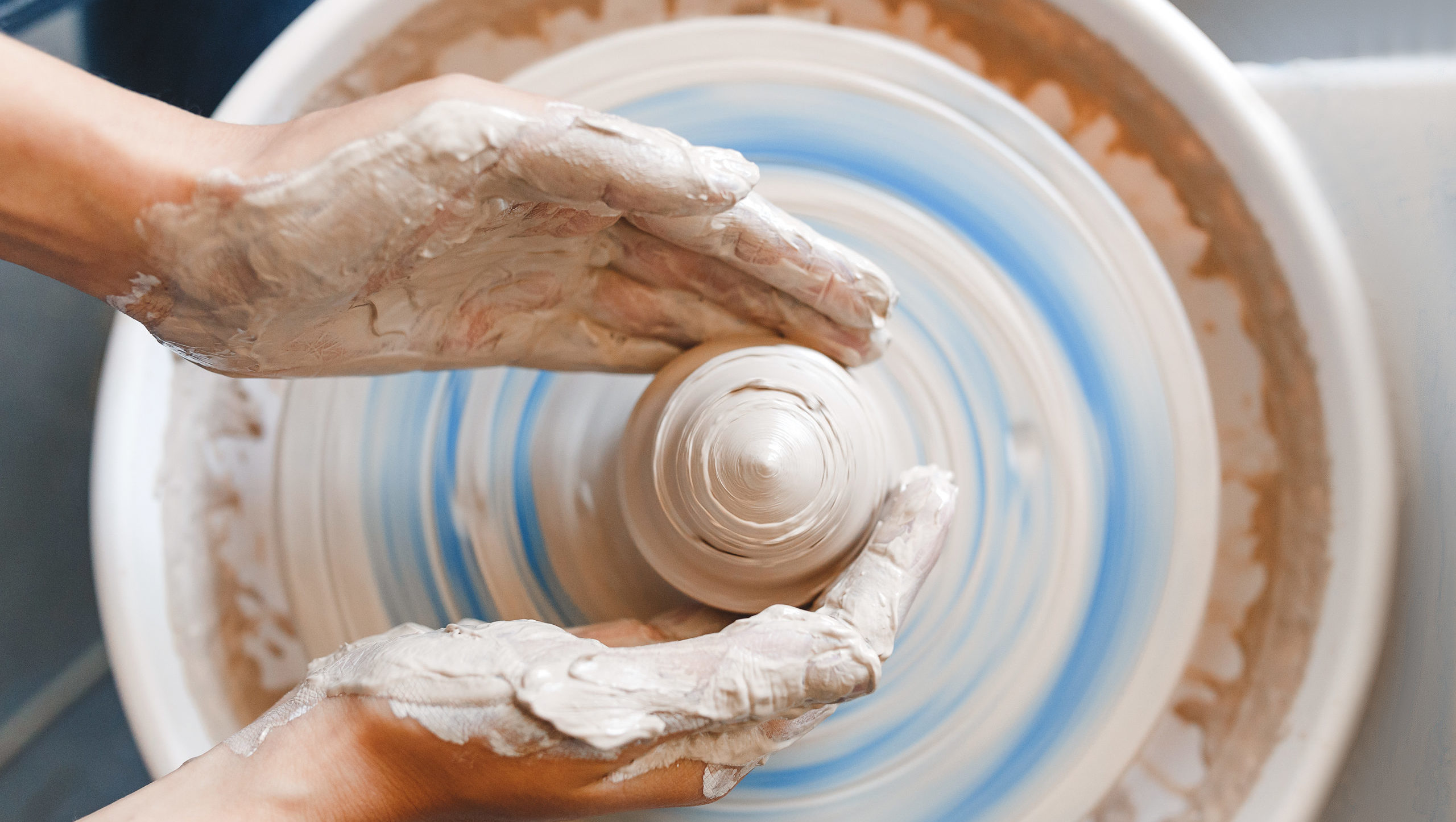
It may be easier to express how an office looks than how it feels. Yet textures send a clear message. Soft rugs signal warm, cozy feelings. Metal chairs can feel uninviting and cold. Using the sense of touch in team building can reinforce camaraderie and a sense of purpose in the workplace.
Building something together by hand can help team members gain a better understanding of each other’s strengths. Creating pottery is a proven team-building activity, and Clay Creations in Pacifica, California, invites groups to get their hands in clay in a positive and energetic way. As groups learn different pottery techniques, the shared experience forges strong team relationships. Options include creating a clay wall mural and a spin with a potter’s wheel for groups of from two to 45.
A totem pole activity provides groups with sections of red clay tubes. Each person works on one foot of the totem pole, adding 3D images, letters, words, carvings and colorful underglazes. This is an experience teams can take home—after it’s finished, it makes for memorable office decor. Clay Creations encourages planners to customize this experience for an event or a team-building activity.
Wine & Dine, an innovative team-building company, promises inspiration for long-lasting bonds in Napa Valley in California and beyond. A grape-stomping and wine-pouring competition, for instance, puts your group in a spirited atmosphere of competition and cooperation. It works like this: Teams of two hop into oak wine barrels and begin crushing wine grapes with their bare feet. Other team members collect the grape juice dribbling from the barrels, then race over to a waiting wine bottle without, hopefully, spilling a drop. Whichever team fills its bottle first, wins. Wine & Dine’s services can be packaged “to go” for any of its team-building activities.
Together We Rise is a nonprofit organization dedicated to transforming the way young people navigate the foster-care system in America. (Each day, 1,200 kids enter foster care in the United States.) From decorating duffel bags to building bicycles and skateboards for foster kids who don’t have access to another form of transportation, Together We Rise offers team-building activities for a corporate outing or as a way to become involved in the local community.
Sea Dog Yoga, located in Channel Islands Harbor in Oxnard, California, offers stand-up paddleboard yoga instruction as well as guided stand-up paddleboard tours of the harbor. They are great for team-building, and people with all levels of experience can participate. Classes are subject to weather conditions, but Oxnard has approximately 267 sunny days per year, so it’s likely that your group will be able to enjoy a class.
Extra, Extra: Using Your Sense of Magic

Tara McKenna, product manager at Wayfair, organized a “pod outing” for her Boston team of engineers and project managers. She hired Jeff Kaylor, a keynote speaker, magician and cinematographer who creates unforgettable experiences for a wide range of audiences. “We had him come into the office and perform magic tricks,” McKenna said. “He’s the real deal and travels the world doing magic, so they thought it was pretty cool he’d come to our office. My teammates were in total disbelief when he had someone peel an orange to discover a dollar bill inside it that another co-worker had written on. Everyone was so impressed, they still talk about that pod outing even three years later.”
Magic can evoke our sense of wonder, and witnessing a trick with other team members can instantly create bonds that strengthen work relationships. Experiencing these moments as a group stimulates more creative approaches to problem-solving, while also teaching skills such as teamwork and communication.
Tapping into the sense of sight, teams will naturally try to figure out how a trick is performed—a perfect learning opportunity. “Magicians create visual illusions because they know that the brain’s neural circuits can process visual information through amplifying, suppressing, converging or diverging visual information,” Personnel Today notes. “This is why someone can walk across the stage in plain sight, but no one will notice. So, when the magician throws the ball in the air twice, then on the third throw it disappears into thin air, this is because he palmed the ball, but used the visual clue of looking up.
“Our neural circuits predict what is likely to happen and we ‘see’ the ball thrown in the air for the third time because that is what we expected to see,” the article continued. “By learning how these tricks work, teams can relate them to problems at work. They learn how not to track the ball and become distracted. Magic also teaches employees to expect the unexpected and to think outside the box.”

